STAFF SHORTAGES STAFF RETENTION and






























Kenneth Saltrick, President of Engineering Services in Twinsburg, Ohio, knows from his long experience that C-arm machines themselves are absolute workhorses.
For customers looking to blend the gap between expensive OEM and unreliable used assemblies, WE have your solution.
Our complete repair contains a new cable assembly, utilizing all OEM cable and components with a harvested plate and connector housing as they are proprietary items. These completely repaired products will have a significant cost savings with build quality above new OEM products and carry a warranty of 180 days, which is untouchable in the market.


WHY ARE PM’S IMPORTANT?
Preventive maintenance is designed to minimize the risk of breakdowns and increase uptime.

• Keep equipment operating efficiently
• Increases the safety of your employees
• Lengthen the lifespan of your equipment
• Helps to avoid large and costly repairs down the road
WHY PURCHASE YOUR SUPPLIES FROM TECHNICAL PROSPECTS?
• Pre-packaged PM Kits for all modalities, based on calibration cycle - Ready to ship!
• No need to order individual parts, all comes in 1 convenient package
• Lower cost than OEM supplies
Don’t have an engineer available to complete your PM’s? Our team of experts can help!








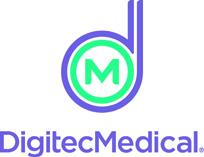






DIVERSITY
Today, women have an earning average of 82% of what a man makes. Can anyone tell me what could be the rationale behind this gap?
COVER STORY
Some radiology administrators are finding staffing success through creative approaches that simultaneously incentivize and empower their employees.

RISING STAR
UC Health-West Chester Hospital Lead Special Procedures Technologist-CT Hollie Schrand is this month’s Rising Star.

Catch up on the latest news from around the diagnostic imaging world.

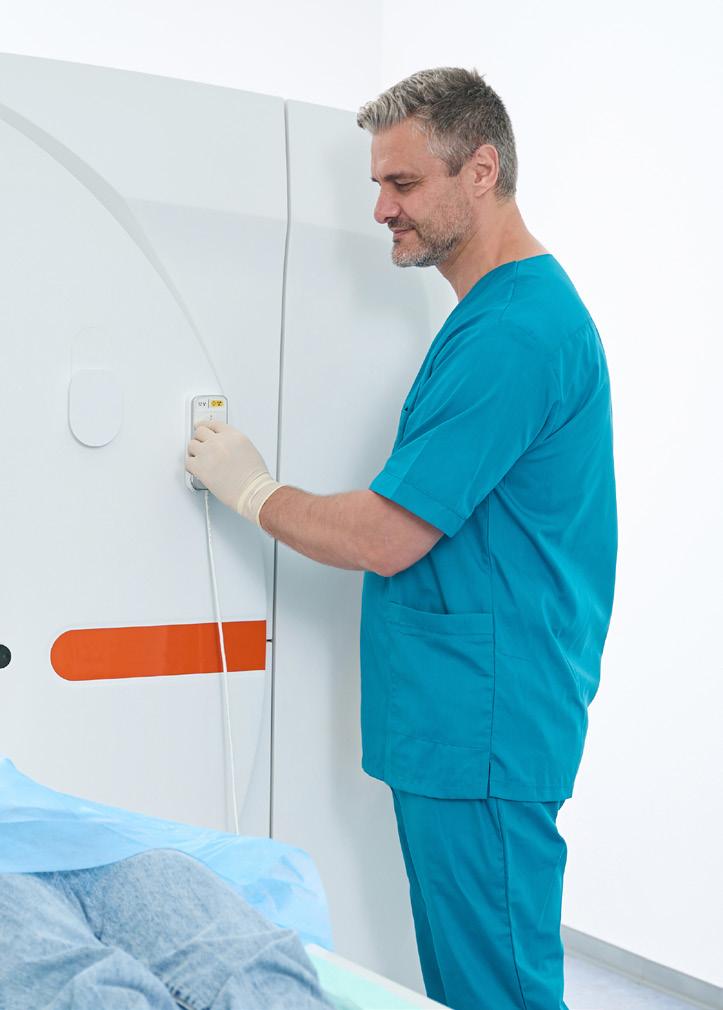
The latest computed tomography devices are featured.

Effective leaders value the insights provided by team members who see things from different perspectives.
Cap your imaging parts expenses.
WHAT IS A CAPITATED PARTS COVERAGE (CPC)?
• Unlimited coverage of all parts and X-ray tubes
• Certified Pre-Owned Glassware
• Includes Technical Support and System Training
• Forward Stocking
WHAT ARE THE BENEFITS TO OUR CUSTOMERS?
• Cap risk on parts expenses
• Improved access to parts & tubes
• Faster access to critical parts with our forward stocking locations
Under our unique Capitated Parts Coverage (CPC), you will have unlimited parts and glass coverage for your imaging equipment. You will also receive premium access to our technical support team and technical training classes.
Call us today to learn more.

Nancy Godby, MSMHA, MA, RT(R)(M) ARRT, CHC, is the director of radiology at Cabell Huntington Hospital Inc. She loves her job and looks forward to arriving at her office each day.
“I love the challenge each day brings and the sense of accomplishment with the completion of major construction projects,” Godby said.
“The landscape of health care has changed so much over my career, never so much as the past three years with the pandemic. I have had the opportunity to work for multiple organizations and count myself lucky to have been able to travel and participate on all levels of patient care,” she said.
However, her radiology career almost didn’t happen. She, fortunately, took some
friendly advice that kick started a successful career.
“I stumbled into medical imaging quite by accident as I had no idea what I wanted to do after graduating high school,” she recalled. “A family friend recommended I look into a hospital-based radiology program. I applied, was accepted, and the rest is history.”
Godby considers her education, along with her family, among her greatest achievements.
“Beyond my family, completing two master’s degrees and rising to a senior leadership position with LifePoint Healthcare serving as the chief operating officer and compliance officer assigned to Logan Regional Medical Center in Logan, West Virginia,” Godby said when asked to describe her greatest accomplishment.
She also said, “Family is everything. I have
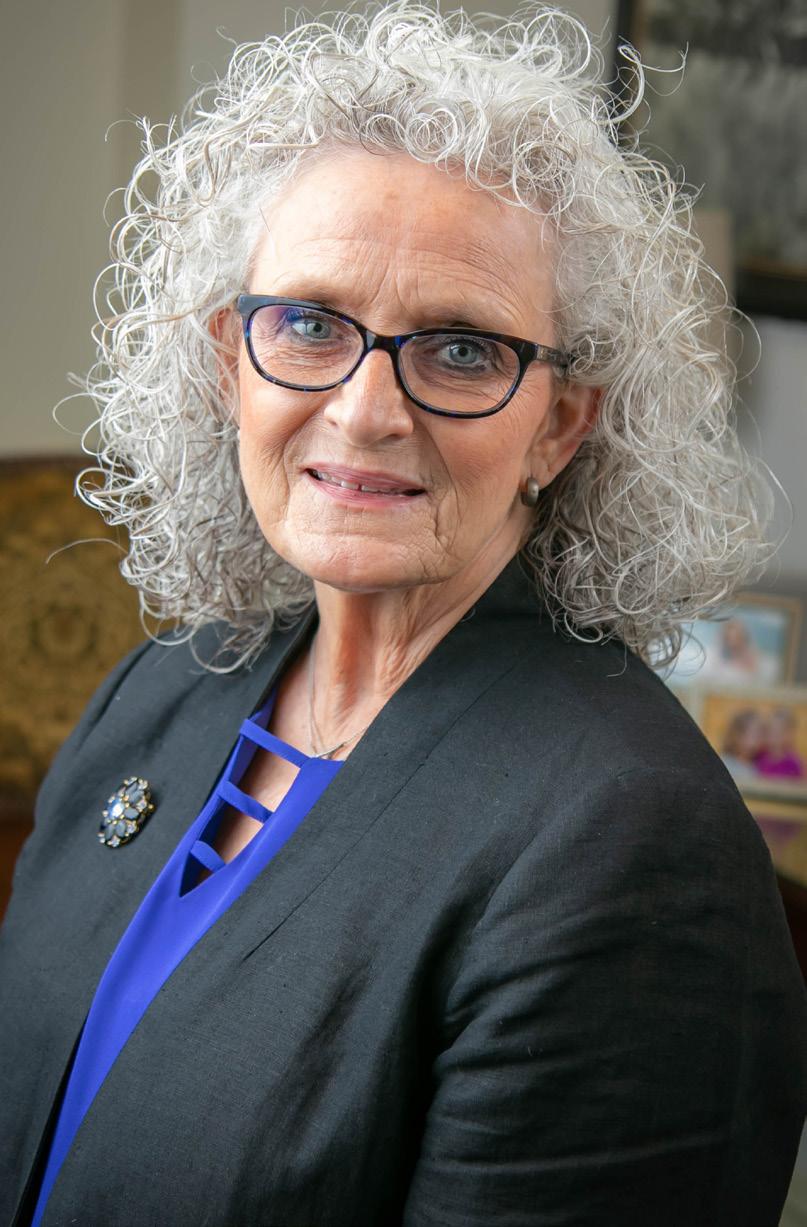
two adult children and am very proud of their accomplishments.”
As an imaging leader, giving back and boosting others to new levels are priorities.
“My approach is to be a transformational leader, guiding my leadership team and supporting their professional development,” Godby said.
“As you can imagine, I have had many mentors throughout my career. The one that sticks out the most is one of my university advisors who was also my thesis sponsor,” she said. “The biggest lesson I learned from him was to always be supportive, provided guidance and demand professionalism. I will never forget all the support and confidence he instilled in me during our time together.”
Her mentor also instilled a desire to serve as a
1. What is the last book you read? Or, what book are you reading currently? Our public library has a robust audio book collection and I am currently listening to “The Power of Choice” by Michael C. Hyter and I recently completed listening to “Becoming” by Michelle Obama.
2. Favorite movie? “Doctor Zhivago”
3. What is something most of your coworkers don’t know about you? My husband is a drummer and he and I were on a CD made by some friends on which I sang. The CDs were purely for fun and were not distributed.
4. Who is your mentor? My current mentor(s) are my leadership team. I like to think we mentor each other. I found this recently and it is so true: “Great leaders aren’t know-it-alls who continuously try to outshine everyone. It’s not about being the smartest person in the room. It’s about building a team with the most intelligent people. You become an inspirational leader when you have the humility to build a team with people more intelligent than you.”
mentor to others.
“I have had the privilege to mentor radiology leadership at multiple organizations as well as being a volunteer mentor for the American Society of Radiologic Technologists Student Leadership Development Program,” Godby said.
When asked about the future of imaging leadership, she sees a bright future based on the bright individuals she works with at Cabell Huntington Hospital Inc.
“I have more than one very capable and competent potential leader within my current department, and we have been working to ensure ‘someone’ is ready to take my place at my departure. Our organization has a leadership academy to plan for future leaders to step up when the time is right and I am urging them to participate” Godby said. •
5. What is one thing you do every morning to start your day? I enjoy 30-40 minutes of quiet meditation followed by the morning news with a great cup of coffee.
6. Best advice you ever received? When an opportunity comes your way, always be the first to raise your hand and volunteer.
7. Who has had the biggest influence on your life? My parents and family.
8. What would your superpower be? I am the most organized person you will ever meet and can capture notes almost word for word when writing and am even better if I have access to a computer to type. Also, my drive to be a lifelong learner.
9. What are your hobbies? Sewing, gardening, and, my most favorite, would be walks on any sunny beach.
10. What is your perfect meal? I realize most people would not think of West Virginia as being in the South, but we love Southern dishes. It is hard to pick just one, but some of my favorites would be fried chicken, potato salad, (mine is the best), green beans, and yeast rolls with sweet tea. Can’t forget dessert – German Chocolate cake. And, by the way, it must all be homemade from scratch. Nothing store bought
“My approach is to be a transformational leader, guiding my leadership team and supporting their professional development.”

Let’s just say it, it doesn’t matter what type of system you work for: For profit, non-profit, academic, community hospital or ambulatory imaging, getting staff credit for a non-billable procedure is tough! At the University of Texas Medical Branch in Galveston, Texas we worked with our executive administration and found a way.
The UTMB executives put out their yearly goals and one was to grow the OR services. Since our system is very sensitive to goal alignment this was a great opportunity for us. The Unit of Service (UOS) measurement used to determine productivity and volume in imaging is a billable CPT code. Since OR Imaging is bundled into the OR exam, we never received staffing credit for those procedures. As imaging leaders, you can see how we were set for failure. The system could not grow the OR service line unless they have the support staff to help.
In response, we requested new cost centers specifically to support the OR with a UOS that could grow as
the OR grew. Instead of the UOS being a billable CPT code, we took the exact same UOS the OR uses for their staffing and that is case hours.
The first year was tricky. We did a retrospective review of how many FTEs we typically staffed the OR with. Then took that year’s OR case hours to come up with a productivity standard. So, when the next years budget came out if the system was budgeting for more case hours in the OR, we benefited from that same increase and were able to add more imaging labor hours to support this growth.
We are now in our third year of having separate OR imaging cost centers and so far, so good. It has been a huge benefit for our academic and larger community hospitals. We have a smaller hospital with less than 20 beds and for that hospital, separating out the OR imaging was more labor intensive than the others because we had to “float” hours into it whenever the technologist was needed. The other campuses are busy enough to keep staff in the OR all day. •
®
Richardson Healthcare engineers form-fit-function CT replacement tubes to enable service providers to improve efficiency and lower the overall cost of healthcare delivery. With the launch of the ALTA750G and our legacy product, the ALTA750 , we proudly expand our CT tube replacement solutions for Toshiba/Canon* Aquilion Scanners. ®
LOWER COSTS & MAXIMIZE CT UPTIME - CONTACT US FOR A QUOTE!


ALTA750 compatible on:
Aquilion 4*
Aquilion 8/16*
Aquilion 32/64*
Aquilion 16 Large Bore*
Aquilion CXL*
Aquilion RXL*
Aquilion VeloCT*
Aquilion Prime Gen 1*
ALTA750G compatible on:
Aquilion Prime S*
Aquilion Prime SP*

UC Health-West Chester Hospital Lead Special Procedures Technologist-CT Hollie Schrand, MBA, R.T. (R)(CT), is this month’s Rising Star. Born and reared in Hamilton, Ohio, Schrand received her training at the University of Cincinnati Medical Center as well as West Chester Hospital.
“In 2006, I received my Associate Degree in Radiologic Technology from the University of Cincinnati (Raymond Walter’s College). In 2009, I received my Bachelor of Radiation Science Technology from the University of Cincinnati (Raymond Walter’s College). In 2016, I received my Master of Business Administration from Walden University. And, most recently, in 2021, I earned my Certified Radiology Administrator (CRA) from the AHRA”, she said.
ICE Magazine found out more about her in a recent question-and-answer session.
Q: HOW DID YOU FIRST DECIDE TO START WORKING IN IMAGING?
A: I first decided to start working in imaging because I had a cousin who was a radiologic technologist and after hearing her stories, experiences, as well as, the pros and cons, and conducting my own research, I fell in love with the
profession. I also decided to start working in imaging because I always had a strong interest in photography. I valued the stability of the career, as well as the challenges and rewarding nature of assisting people in their time of need.
Q: WHY DID YOU CHOOSE TO GET INTO THIS FIELD?
A: The number one reason why I got into the imaging field was to be able to make a difference. As we all know, we are an essential part of the hospital team and without imaging, patients can’t get the diagnosis and treatment they need. This field has also allowed variety and the ability to build strong relationships with patients, hospital care providers and families throughout the years and this is one of the most valuable rewards of an imaging career, in my opinion.
Q: WHAT DO YOU LIKE MOST ABOUT YOUR POSITION?
A: The people around me! This career has provided me with an opportunity to collaborate with other leaders throughout the organization. This has led to many successes, and greater patient outcomes and strong trusting professional relationships and bonds. Building these relationships with individuals throughout the organization has been a key factor to my team’s success. My team at West Chester Hospital and University of Cincinnati Medical Center has challenged me but also supported me and allowed me to thrive. I believe that I am better because of them and, in return, I strive to make them better daily because of my influence.
Q: WHAT INTERESTS YOU THE MOST ABOUT THE IMAGING FIELD?
A: The imaging field is forever changing and constantly evolving. Every day is a new adventure, new stories, and new opportunities for patient care.
Q: WHAT HAS BEEN YOUR GREATEST ACCOMPLISHMENT IN YOUR FIELD THUS FAR?
A: My greatest accomplishment in my field thus far is building teams. The professionals I work with daily wholeheartedly trust me and know, that no matter what, I will go to bat for them. They have supported me and as a team I believe we will continue to conquer challenges head on and thrive.
Q: WHAT GOALS DO YOU HAVE FOR YOURSELF IN THE NEXT 5 YEARS?
A: My goals in the next 5 years are to continue learning everything there is to learn about health care, as a whole and build relationships with individuals in the organization in hopes of one day becoming an imaging director. •
FAVORITE HOBBY: Riding horses, hunting and fishing
FAVORITE SHOW: “Yellowstone”
FAVORITE FOOD: Pizza
FAVORITE VACATION SPOT: Hawaii
1 THING ON YOUR BUCKET LIST: Watch my son pitch in a college baseball game next year!
SOMETHING YOUR CO-WORKERS DON’T KNOW ABOUT YOU:: Ten years ago I was able to saddle break a new pony who is now the first to greet me in the pasture and the horse that my kids can now ride.
Jordan Schneider has always enjoyed working on machines. As a kid, it was bicycles, with his brother and a few friends; when they got their driver licenses, their focus turned to cars. Schneider’s labor didn’t come without its rewards, either: buying a vehicle and improving it also meant he could flip it for a profit.
“I worked part-time through college, and always drove something that needed a little bit of work,” Schneider said. “Over the years, it evolved into anything with an engine or wheels that people were getting rid of. Picking up a free lawnmower on the side of the road turned into friends and coworkers giving me snowblowers and lawnmowers. I learned how to make repairs, and clean and disassemble things.”
As he became father to his son, eight-year-old Jack, and daughters Madison (5) and Maleah (3), Schneider began including them in his repair jobs, and sharing the results with friends on Facebook. After a while, he started an Instagram account called “Schneider and Son,” modeled after the 1970s Redd Fox sitcom “Sanford and Son,” that featured videos of the reclamation projects Schneider tackled with his kids. As the audience grew, Schneider’s efforts led to a YouTube channel that now has some 4,000 subscribers.
“A former coworker gave me a Honda Odyssey that they were getting rid of,” he said. “Somewhere along the way, I fumbled into old ATVs, quads and three-wheelers; anything somewhat vintage. That spiraled into buying more projects.”
Schneider said his videos include tips and steps for the do-it-yourself (DIY) crowd, with an emphasis on small engines and fun. Neither he nor his children take themselves too seriously, and he feels good about helping educate his viewers while he entertains them. Sometimes the end results are sold off for funds to seed the next project; in other instances, Schneider is happy to hand off a working appliance like a lawnmower to someone who needs one. He described “an aspect of gratitude that goes into all this,” and the joy it brings him to get broken things working again.
“There’s been times where I feel really blessed by people who’ve given us different things,” Schneider said. “If I got a lawnmower for free, and somebody’s looking for one, I’ll pay it forward. It’s a fun little side hobby, more just for the journey, the story, and the experience of doing it together, and doing our videos.”
Currently, the family is in the process of fixing up an old Chevrolet truck; naturally, the soundtrack for garage work in Michigan is Bob Seger & the Silver Bullet Band, and Schneider is happy to pay homage to the musician in his videos. He also enjoys a helping hand from family when it’s available.
“I always wanted to be like my brother, who is two years younger, because he could fix anything,” Schneider said. “He is an inspiration to me. He went to school for high-performance race engine machining, learned how to build race engines, and now he’s a machinist at MSU making parts for particle accelerators. We get a chance to work on things together, and it’s really fun.”
Schneider equally enjoys producing videos that feature his son’s work. He’s proud to leverage the opportunity of his own knowhow into teaching his children skills that they can lean on for the rest of their lives.

“When my son comes along on the buying and selling adventures, he’s getting a chance to learn life skills – negotiation, people skills, the exchange of value – and he’s becoming more entrepreneurial in the process,” Schneider said. “He’s learning hands-on things, and he’s learning business skills.

“We try to make it fun,” he said. “If we sell the item that we’re looking to sell, maybe we’ll get Slurpees or a chocolate milk. I’m trying to encourage them to enjoy the experience.”
Working in the garage together also doubles as family time with his kids, and Schneider believes that all three eventually will show some interest in repairing things.

“Sometimes they act more interested than other times, but it’s a good opportunity for them to do something together as a family, no matter what we’re doing,” he said. “We’re giving them an opportunity to see if they like to be hands-on. My youngest tends to be the one who will come over and hang out with me; right now it’s, ‘What’s dad working on today?’ ”
Schneider credits the downtime of the novel coronavirus (COVID-19) lockdown with inspiring people to rediscover hobbies like automotive repair and the joy of working on simple machines. It feels like a bygone skill set that is nonetheless invaluable. His advice for repair novices is to start with online research and then build up hands-on experience slowly; he hopes his work will facilitate others trying to gain confidence in their abilities as well.
“I tackled projects that I didn’t think I could because I was encouraged to do this,” Schneider said. “Growing up, the people who were in my family and my network encouraged DIY fixes. It’ll be a skill that’s less and less common, to be able to work on things yourself, as we go more towards electric vehicles. And then it’ll be more of a hobby. But there’s always a need for this.”
When they’re not wrenching on cars, the Schneiders enjoy sports, travel, camping, participating in their church community, and spending time with their large extended family. Jack has some years before he’s ready to hit the road as a driver himself, but Jordan still holds out hope of flying out West or down South to buy an older car or truck to work on fixing together.


Find “Schneider and Son,” online at YouTube: @schneiderandson

https://www.youtube.com/channel/UC3EnCMGIwSqLUSlaYILlgxQ
Instagram: @schneiderandson
https://www.instagram.com/schneiderandson/?hl=en


DMS Health Technologies (DMS), one of the nation’s largest mobile imaging providers, has finalized terms to acquire the assets of Advanced Imaging Management (AIM), a national provider of mobile MRI and ultrasound systems based outside Houston, Texas.

“DMS is committed to meeting the growing demand of hospitals and health systems for high-quality, affordable mobile imaging solutions,” said Patrick Doyle, DMS Health Technologies CEO. “AIM’s national reach and reputation for quality care and service are an ideal fit for DMS, and their addition to our national fleet allows us to continue to meet that growing demand.”
“It was important for us to find a partner committed to private ownership that shares our passion for quality care and service,” said Lynn Williams, CEO of AIM. “We
found that with DMS, and becoming part of their national fleet creates exciting new opportunities for our employees and customers.”
The asset purchase was completed on March 1, with AIM employees immediately joining DMS and all contracts, services and care automatically transferring to DMS Health Technologies. No terms were disclosed.
DMS Health Technologies, based in West Fargo, North Dakota, owns and operates one of the nation’s largest fleets of mobile MRI, CT, PET/CT, digital PET/CT and nuclear medicine systems serving hospitals and health care systems across the United States and Canada. Most recently, DMS expanded its fleet with the addition of several state-of-the-art digital PET/CT units making it among the first in the country to deliver that technology.
FedML is a decentralized and collaborative machine learning platform that enables training, deployment and continual improvement of AI models anywhere. FedML recently announced that it will partner with Konica Minolta.
“Large machine learning (ML) models are breaking new ground every day, achieving unprecedented performance in various application domains, such as computer vision, speech and language processing, data mining, health care and life sciences,” said Salman Avestimehr, CEO and co-founder of FedML. “However, the performance of such models heavily depends on the size and diversity of the datasets, as well as the quality of their annotations. This creates a major pain point in the development and utilization of stateof-the-art ML models in the health care domain, as medical data obeys strict regulatory laws and privacy restrictions and is very costly to annotate. This leaves most institutions with their own datasets, limiting AI from reaching its full potential in health tech.”
Fortunately, FedML allows AI technologies to use these siloed datasets without centralizing or transferring the data. It enables machine learning from decentralized data at various nodes without concentrating any data in the cloud (i.e., “learning without sharing”), which provides privacy, reduces development costs
and furthermore empowers data owners to monetize their data and compute resources.
“It has become clear that machine learning and AI can greatly impact health care by improving diagnostics, patient safety and treatment planning. According to the recent market research data, the projected market size of AI-based global health care solutions is expected to reach $200B+ by 2030. However, health care data, which is essentially the fuel for machine learning, is very much siloed and heterogeneous due to privacy rules (e.g., HIPAA, GDPR, CCPA, etc.), data regulations, disconnected IT infrastructure of health care systems, and diverse procedures for data collection and annotation at different health care institutions. FedML provides the much needed ML platform for developing AI applications in the health care ecosystem with isolated and heterogeneous data silos,” said Dr. Jun Amano, open innovation lead at Konica Minolta Business Solutions USA.
In this partnership, FedML will empower Konica Minolta to launch collaborative and privacy-preserving training, serving and monitoring of ML models for medical imaging and radiomics across decentralized data silos (e.g., different hospitals) with diverse annotation quality. The partnership will also help strengthening FedML’s platform for further adoptions in the health care domain.

Richardson Healthcare, a division of Richardson Electronics Ltd., has introduced the ALTA750G CT tube manufactured by Richardson Healthcare that is designed for use as a form-fit-function replacement tube for the Canon Medical Systems CXB-750G tube, also known as the Varex Imaging MCS-7178A. The Richardson Healthcare team showcased the ALTA750 CT Tube Series, including the ALTA750G and the ALTA750, which cover many Canon CT tube requirements, at the 2023 European Congress of Radiology (ECR) in Vienna, Austria.
The ALTA750G is fully compatible with select types of OEM CT scanners. Each X-ray tube housing assembly has the large and small focal spot measured and meets the OEM specification. Each X-ray tube assembly is radiation leak checked and complies with FDA and IEC radiation leakage standards. The Canon CT scanner models that use this tube are the Aquilion Prime S and Aquilion Prime SP. Richardson Healthcare sells its ALTA750G tube as part of an X-ray tube installation kit that includes a new high voltage cable and a cleaning/ grease kit. The ALTA750G has a prorated 12-month or 200,000 slice count limited warranty, whichever comes first.



Royal Philips and the Gibraltar Health Authority have announced a long-term strategic partnership continuing their long-standing relationship and marking ambitions to advance radiology and cardiology patient care. As part of the agreement, the building of a brand-new interventional cardiac suite (cath lab) will commence later this year. The construction and installation of this specialist equipment will take approximately 9-12 months and will be accompanied by a service agreement to ensure ongoing maintenance of the equipment.
Gibraltar’s newly improved services will bring sustainable benefits for patients at St. Bernard’s Hospital, with developments expected to lead to more cardiac patients receiving local treatment, instead of traveling across the border to neighboring Spain. Expected clinical outcomes include reduced length of stays for such patients, relieving pressure on demand for hospital beds and ambulance transport services,

and improvement in 30-day mortality rates.
The new interventional suite will bring St. Bernard’s Hospital’s services up to full operating capacity, allowing more patients to receive a range of cardiology treatments such as coronary angioplasty, catheterization to treat artery blockages and minimally invasive replacement of heart valves. In parallel, existing Philips systems within the hospital will be upgraded with the latest technology, including the replacement of equipment in two X-ray rooms, a fluoroscopy room for real-time moving X-ray imagery and ultrasound systems. As part of the agreement, a new CT system will reduce downtime and delays in diagnostics whilst creating opportunities for St. Bernard’s cardiology and radiology teams to further expand services. This could see the Gibraltar Health Authority continue to bring care closer to home for future patients, such as through the availability of coronary CT scanning.
The Medical Imaging & Technology Alliance (MITA) has submitted comments in response to the United States Geological Survey (USGS) request for information regarding risks to the current supply of helium.
In its letter, MITA highlighted that a reliable helium supply is critical for the operation of magnetic resonance imaging (MRI) technology, a medical imaging device that plays an essential role in advanced medical research and patient care for serious medical conditions, including cancer, orthopedic injuries, heart disease and neurological degeneration.
Helium is needed for periodic maintenance throughout the life cycle of an MRI machine, as it creates the conditions needed for superconductivity in the device’s strong magnet. The United States currently has over 10,000 MRI systems installed, each requiring, on average, approximately 2,000 liters of liquid helium that must be periodically replenished. If issues such as helium leakage arise in the machine, the system’s helium must be entirely replaced.
“Over the past decade, geopolitical challenges, climate change, privatization of the nation’s helium reserves, and an increase in demand have created shortages in the helium supply chain,” said Patrick Hope, executive director, MITA. “These challenges have resulted in high costs that threaten the health care industry’s ability to install new MRI systems and service the existing installed base.”
The tremendous expense of replenishing an MRI’s helium sometimes necessitates that the device be temporarily or permanently mothballed, leaving patients without access to this critical medical tool.
The letter acknowledged that although the medical device industry is creating innovative MRI technology that requires less helium, the medical sector will continue to require adequate helium quantities at a reasonable cost.
To ensure that patients can access MRI technology, MITA recommended that policymakers earmark helium supplies for purchase.
Attention all diagnostic imaging professionals, the Imaging Conference & Expo invites you to celebrate its 10th anniversary in sunny Irvine, California next February!
Mark your calendar now for February 18-20 and join colleagues at The Hyatt Regency Irvine (formerly Hotel Irvine) for networking, continuing education and exhibit hall.
The Imaging Conference and Expo (ICE) is the only conference dedicated to imaging directors, radiology administrators, and imaging engineers from hospital imaging departments, freestanding imaging centers and group practices. ICE offers valuable CE credits (pending approval) and, keeping in line with MD Publising’s successful conferences in the past, offers comprehensive educational opportunities for attendees.
Whether it’s invaluable continuing education,
productive networking or the exclusive exhibit hall, attendees will have the perfect opportunity to enhance their careers and spend time with colleagues. As an added incentive, ICE conference admission is complimentary for all hospitals, imaging centers, military and students.
ICE continues to be the only conference to combine leaders in imaging management with imaging engineers, providing an exclusive and unique community of key decision makers and influential imaging professionals. ICE is the perfect resource to grow and prosper, personally and professionally.
ICE 2024 is currently accepting applications to present at the conference.
For more information, visit attendice.com/call-for-presenters.
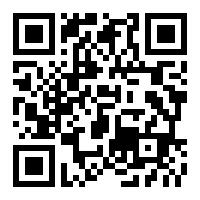

Come experience everything Arizona and Colorado have to offer. Life doesn’t get much better than 300 days of sunshine, hiking, biking, lakes, rivers, and so much more. We invite you to our out patient imaging centers where your feedback and life work balance are valued.






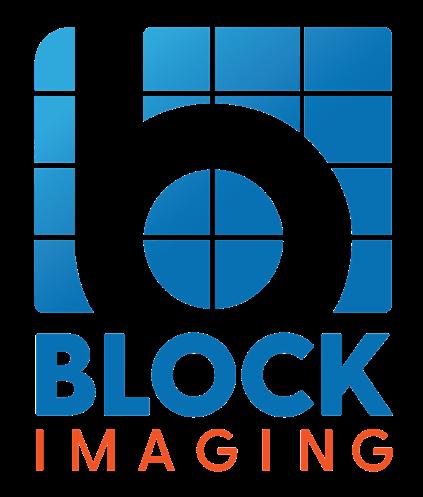
Block Imaging recently expanded its business development team to better support health systems and asset management groups across the United States.
Over the past three months, the team has grown to include two new members, Dick Branca and Olivia Gleissner. Both will work alongside Jen Davis, who joined the business development team in August of 2022, and Tom Spees who joined in 2020.
As health care systems continue to operate with increasingly tight budgets, finding a reliable and knowledgeable imaging company is crucial.
With the expansion of the business development team, Block Imaging customers and industry partners can look forward to a more personalized approach to their imaging needs. This approach aims to provide the right parts, service, equipment or mobile imaging solutions for a facility and its budget.
Branca’s primary focus will be on providing support to key Block Imaging relationships with parts and service solutions that fit their facilities’ needs.
He brings 15-plus years of experience in multiple modes of distribution, manufacturing, marketing and service, which has helped him understand the needs of customers and gain a unique perspective in an ever-changing market.

“I am excited to join the Block Imaging team!” Branca said. “The culture and focus on treating customers the right way is the perfect match for me. I expect it to be a winning combination.”
Gleissner will focus on building strong relationships with health care systems and independent service organizations in the northeastern region of the U.S. Her goal is to help new customers find the right imaging equip-
ment solutions for their facility.
She brings multiple years of experience in the business and imaging space supporting and developing service customers. Her experience in the health care industry and passion for customer care make her an excellent addition to the team.
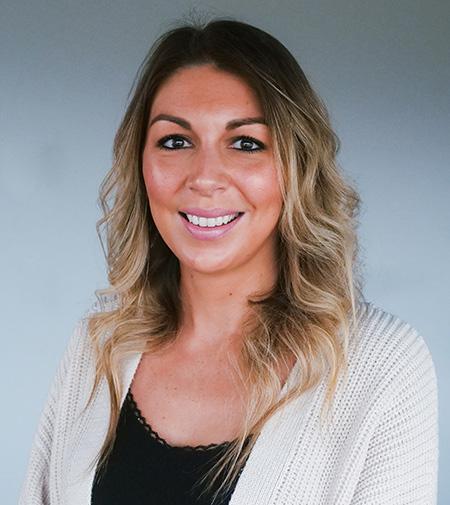
“What excites me most about joining the Block team is the culture and the people. I also really like that Block puts the customer’s needs first and really listens to what they need so we can help to the best of our ability,” said Gleissner.
With the addition of experienced and dedicated team members, Block Imaging looks forward to supporting new and existing customers with imaging solutions that meet their budget and patient care needs.
“We are so excited for this opportunity of growth,” said Chad Seelye, vice president of parts development. “Internally, when a team ranges in experience from 5 to 40 years in the imaging world, that provides an incredible platform for growth for everyone. Outside of our organization, many groups have heard of Block Imaging, but they may not be aware of the areas in which we can support them. It’s exciting to see the impact that we’re already having with increased support in health systems throughout the USA.” •
Dick Branca
The recent ICE webinar “The Great Resignation and Quiet Quitting – Why Mentoring Is Essential” was presented by AHRA President Brenda DeBastiani, MBA, BA, RT(R), CRA, FAHRA. She is also the director of imaging at Bravera Health Spring Hill.

DeBastiani’s objectives were:
• Describe the “great resignation”
• Describe “quiet quitting”
• List required skills for mentors and mentees
• Differentiate between a mentor and a coach
• Describe why mentorship programs are valuable
The webinar was popular with 85 individuals registered for the session and 47 attended the live event. A recording of the webinar is available for on-demand viewing at ICEwebinars.live.
During the webinar, several attendees participated in a question-and-answer session where DeBastiani provided additional insights.

One attendee asked, “Do you believe that quiet quitting is worse than the great resignation?”
DeBastiani explained that she views quiet quitting as worse because when an employee resigns you know what you’re dealing with — the person left. But, with quiet quitting, the person is still physically there, but they’re really not contributing. Your team is having to take on the brunt of the work, since it’s not in the quiet quitter’s job description, they’re saying, nope, that’s not mine so everybody else has to pull the load. That really brings down morale and is tough for the entire team to deal with.”
Another question was, “What have you found to be effective to improve trust between mentors and mentees?”
“Well, I think honesty and vulnerability are a must,” DeBastiani said. “The mentors have to share what issues they
are experiencing and the mentees have to be honest with what they are struggling with.”
She added that she often notices that the mentee doesn’t want to appear dumb, so they pretend like they have it all together, when in fact they really need help.
“So, the mentor has to break down those barriers and make sure that they really know what the mentee doesn’t know. The mentor then struggles because, you know, if they’re not being honest, that’s really hard. So, the mentor might be experiencing issues catching on to a new software program. Or they might be a guru with computers, but if they don’t share what they’re good at and what they’re bad at with each other, then you’re never going to get ahead,” she explained. “So, I think that is how you get ahead is having really, really honest communication, and then also just being vulnerable.”
The complete Q&A is available in the on-demand recording of the webinar at ICEwebinars.live.
Attendees provided feedback about the webinar via a survey that included the question, “Why do you join ICE webinars?”
“ICE always brings relevant information helpful to my daily department management,” said Nancy Godby, director of radiology, Cabell Huntington Hospital.
“To gain new insight into the imaging field and professional growth,” said Jeffrey Kennelly, admin director of imaging services, CHI St Alexius Health Dickinson Medical Center.
“Support ICE and the presenters while learning about the subjects,” said John Beall, health system specialist-strategic planner, VA Puget Sound Health Care System. •
STAFF REPORT

































































































































































































































patient comfort,” Grand View Research reports.
AGrand View Research report states that the global computed tomography market size was valued at 4 billion in 2021 and is projected to expand at a compound annual growth rate (CAGR) of 7.3% from 2022 to 2030.
“Technological advancements in CT technology, coupled with the growing prevalence of chronic disorders such as cancer, orthopedics, and cardiovascular and neurological conditions are expected to accelerate the market growth,” the report adds. “As per the WHO, in 2020 cancer accounted for about 10 million deaths globally. Since the onset of the COVID-19 pandemic, there has been a boost in the usage of CT scan equipment, therefore demand for advanced imaging solutions is projected to drive market expansion. As per OECD, in 2020 the number of CT units installed in the U.S. was 42 per million population.”
New technology is among factors driving growth of the market.
“Technological advancements such as the integration of artificial intelligence and the development of accessories to enhance image quality obtained by conventional CT scanners are the major factors expected to fuel market growth. For instance, in May 2021, Siemens Healthineers launched a new CT scanner, Somatom X. need. It is a high-speed, high-resolution CT scanner with an intelligent operation approach that makes procedures easier for medical staff and patients. In September 2021, GE Health care introduced a new CT system, Revolution Ascend which uses artificial intelligence (AI) to improve operational efficiency and
“The hospital segment dominated the market and accounted for the largest revenue share of 36.3% in 2021. The increasing number of emergency admissions in hospitals and the growing number of surgeries performed each year have contributed to the market share. Moreover, CT scans serve as an effective tool for accurate diagnosis pre-operative and post-operative to determine the effectiveness of the treatment,” the report adds.
Mordor Intelligence also released a report predicting market growth.
The computed tomography (CT) market is valued at $7.5 billion in the current year, and it is projected to reach a CAGR of 5.76% during the forecast period ending in 2028, according to Mordor Intelligence.
“The increasing number of COVID-19 cases has increased demand for CT scanners, which is expected to impact the market positively. For instance, in June 2020, the Abu Dhabi Health Services Company (SEHA) launched a 16-slice mobile CT scanner in the UAE for diagnosing pneumonia in COVID-19 patients, indicating that developing countries are using CT scanners for the detection of COVID-19. The CT examination played an important auxiliary role in the diagnosis and subsequent management of COVID-19 patients. CT scans can reduce the chance of false-negative results in the RTPCR assay. These findings led to an increased demand for CT scans in the country during COVID-19. Governments worldwide are adopting policy measures to reduce the transmission of COVID-19, which is further decreasing the demand for imaging independent of COVID-19. Measures taken by hospitals to expand crisis capacity are further reducing the amount of appropriate medical imaging that can be safely performed.” •

As the pace of change in health care continues to increase, health plan leaders cite driving operational efficiency as one of the top challenges they face today1. Studying radiology departments’ entire workflows and identifying opportunities to simplify and streamline processes, GE HealthCare is proud to introduce prescan, scan, and post-scan automated and AI-based applications on Effortless Workflow.
At RSNA 2022, the company unveiled four new solutions designed to enhance imaging consistency, efficiency and improve reading experience for fast and consistent image post-processing:

• Spine Auto Views2 is designed to utilize a deep learning algorithm to immediately generate anatomically orientated, labeled spine images and presents them to the interpreting clinician ready to read;
• Head Auto Views3 brings an algorithm intended for automatically aligning head CT images;
• Spectral Auto Views3 is engineered to automatically processes images with specific spectral information, directly from the spectral dataset to Picture Archiving and Communication Systems (PACS); and
• FastStroke with StrokeSENS4 leverages automatic and AI algorithms for immediate processing of ischemic stroke cases and emailing results.
1 “HealthEdge Survey Highlights Growth Opportunities and Challenges for Health Plan Leaders.” HealthEdge. 9 April 2022. https://www.healthedge.com/about-us/news-events/pressreleases/healthedge-survey-highlights-growth-opportunities-and-challenges-for-health-plan-leaders
2 Spine Auto Views is 510(k) pending at FDA. Not available for sale in the US.
3 This is neither an offer nor an agreement to supply Head Auto Views, Spectral Color Overlay and Spectral Bone Marrow. None of the applications are CE-marked. Cannot be placed on the market or put into service until it has been made to comply with the Medical Device Regulation requirements for CE marking or otherwise obtained all required regulatory authorizations.
4 StrokeSENS™ is legally manufactured by Circle Neurovascular Imaging, Inc. StrokeSENS is not available for sale in all countries.
The uCT ATLAS is now available up to 640 slices. The ultra-wide 82-cm bore and 700-pound table weight capacity facilitates comfortable scanning of large patients and excels in the trauma environment. It features an integrated uAI Vision 3D camera for an AI empowered workflow, offering operational efficiencies that make complex exams simpler to perform. The speed of a large area coverage system coupled with a 0.25 second gantry rotation makes it easy to image pediatric and trauma patients as well as patients with compromised breathing. kVp scanning capability, uAI AI-IR and KARL 3D reduce radiation dose while maintaining image quality.

The NAEOTOM Alpha with Quantum Technology from Siemens Healthineers is the world’s first photon-counting computed tomography (CT) scanner and the result of more than 15 years of research and development. Quantum Technology provides four distinct benefits: improved image contrast, higher spatial resolution without the usual dose penalty, complete elimination of electronic noise, and intrinsic spectral sensitivity. The NAEOTOM Alpha combines that Quantum Technology with the company’s Dual Source technology, which provides fast temporal resolution, high scan speeds, and immense power reserves to potentially offer radiologists more insights in every exam, a new level of detail, and the ability to diagnose patients who were previously unscannable.

Fujifilm’s SCENARIA View Focus Edition is a premium, 128-slice CT with 80cm gantry and a more powerful 84kW generator for easier patient access and enhanced bariatric capabilities. Focus Edition is designed for routine and advanced clinical applications, including coronary angiography (CCTA), interventional CT, extended coverage shuttle scanning for perfusion exams and dual energy. Cardio StillShot is an available advanced 3D cardiac motion correction option which provides effective temporal resolution of up to 28ms to help clinicians capture clear images of the heart and coronary arteries while enabling lower dose prospective gating – even on the most challenging heart rhythms.
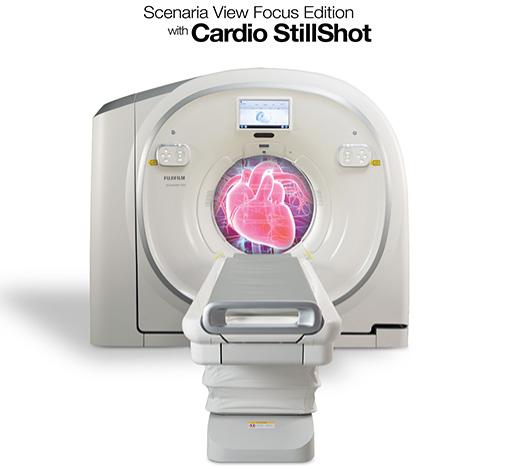
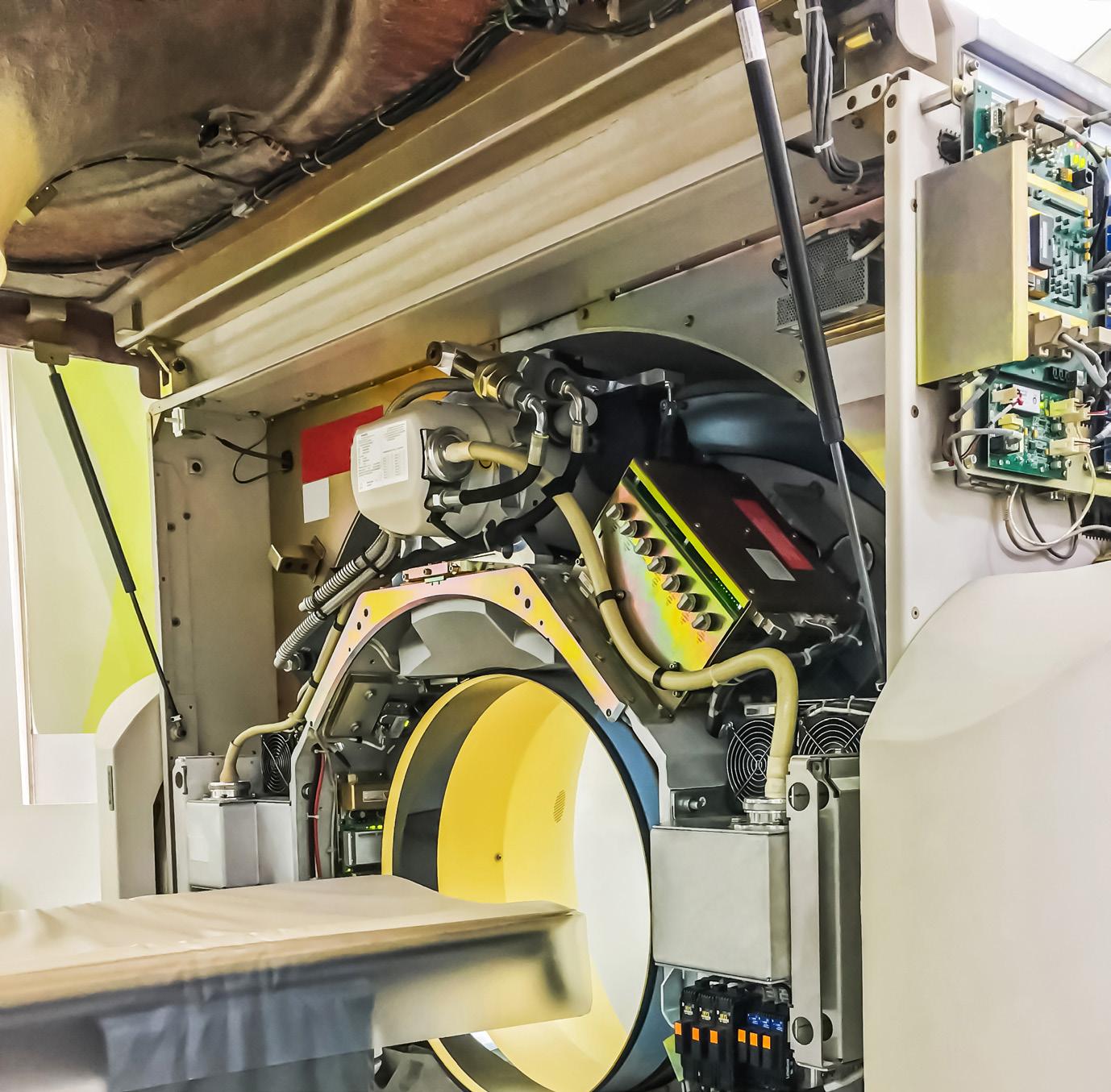



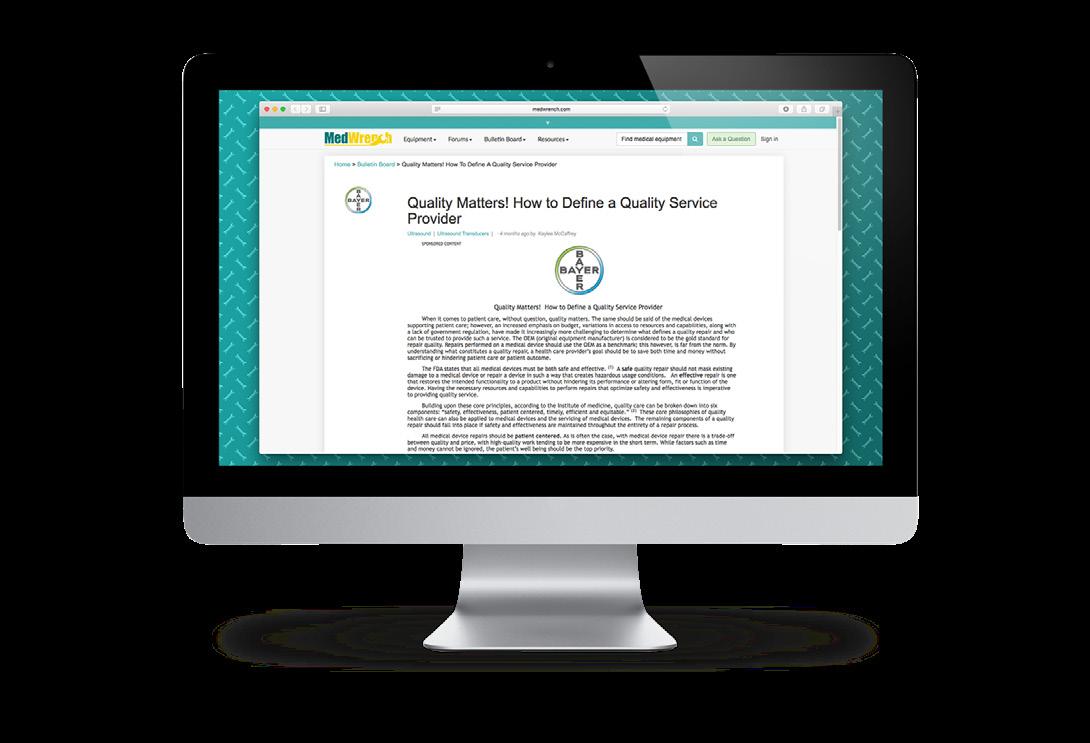

Register to view live webinars each month.


Watch recorded webinars on-demand.

ARRT Category A
CE credit is pending approval by the AHRA.

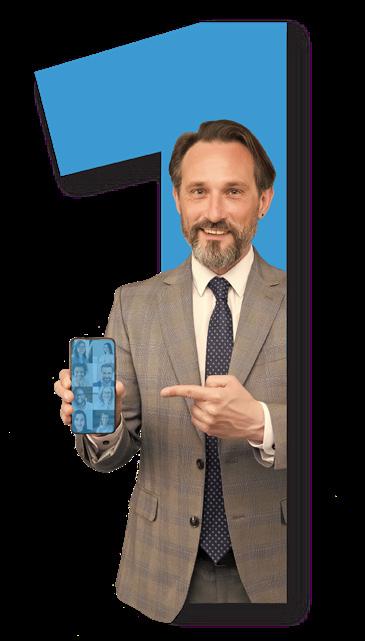
 BY MATT SKOUFALOS
BY MATT SKOUFALOS
For the better part of the past decade-plus, staffing concerns in the medical imaging space were mostly concerned with managing the institutional knowledge loss of generational retirements. But in the chaos of the novel coronavirus (COVID-19) pandemic and its aftermath, nearly every employment sector in the U.S. economy has experienced some impact of the Great Resignation – the phenomenon of long-tenured professionals changing careers or exiting the workforce altogether – which has only compounded underlying concerns in the medical imaging space.
Some radiology administrators are finding success through creative approaches that simultaneously incentivize and empower their employees to play a more active role in their own workplace environment and flexibility. Josh Laberee, administrator at Advanced Imaging of Orlando, Florida, generated positive results with his front-desk staffing demands by paring back his team, raising hourly wages and enabling his best workers to handle more responsibilities.
“To me, it’s about quality over quantity,” Laberee said. “I used to have eight fulltime employees ranging between $15 and $18 per hour. I have to offer an attractive workplace and competitive pay. How do I compete with somebody who can work at home for 20 bucks an hour?”
Laberee reduced the number of front-desk positions from eight to six, raised the rate of pay for the role by $3 per hour, and still saved on labor costs. Moreover, by offering better pay, he discovered he was attracting more and better qualified candidates for the jobs he had available. The approach enabled him to replace four of his original eight staffers with workers who more closely align with the professional atmosphere Advanced Imaging had been trying to cultivate. He went from finding three or four interview-qualified applicants out
of 100 who applied for each position, to 20 to 30 out of 300.
“At the $19- to $22-per-hour range, it attracts a higher-quality employee,” Laberee said. “Instead of an entry-level person, you have a shift leader, an independent thinker, a multitasker. We’ve continued to follow that model, not just for front desk positions, but techs as well.”
In addition to improving wages, Laberee also empowered his front-desk staffers to create their own work schedules among the group, and cultivated their feedback on how to improve the workplace atmosphere, “and that’s gone very, very well,” he said.
“They have the best ideas; they’re the ones who are in there daily,” Laberee said. “I now have a monthly staff meeting as well, and that has gone extremely well as far as coming up with ideas from efficiency and workflow perspective.”
In addition to wages, Laberee said he offers competitive benefits packages, which include seven paid holidays, two weeks of paid vacation, and birthdays off. By the first year of tenure, those benefits increase to three weeks of paid vacation; at three years, employees get four weeks off, and five weeks by year five.
Understanding that everyone has interests outside of work in which they enjoy having time to participate, the flexible scheduling and paid time off incentives are strong employee retainers. Monthly perfect attendance earns a $100 cash bonus, and Laberee established additional monthly bonus incentives from $100 to $300 per employee tied to revenue collections. Moreover, Advanced Imaging also celebrates its employees and their families with quarterly off-the-clock events, whether it’s a picnic, dinner or an experience like an escape room outing.
So far, the moves have increased employee retention in each of the 39 practices he manages by 40 percent. Part of the reason the system has been so successful is that earnings are shared with the employees who generate them, and the process for generat-
ing bonuses is transparent among staff and administration.
“Everybody’s incentivized to keep the schedule full,” he said. “If the money’s coming in the door, everybody benefits; everybody’s bonused. You’re talking about $3,000-$5,000 a month [in bonuses], and I’ve been able to increase revenues $15,000-$20,000 a month.”
“Transparency’s everything,” Laberee said. “I know everybody thinks that we’re printing money in private practices and outpatient services, but that’s not the case. I did 22 percent more volume in 2022 than I did in 2014 for the same amount of money. Amid decreasing reimbursement and rising costs, we have to figure out what we can do to keep our overhead as low as possible while providing quality service.”
Laberee also believes that understanding generational differences in the corporate environment helps to retain quality employees. He blames “a combination of deliberate lack of education and transparency in corporate America” for failing to address this circumstance for too long, and added that “it’s up to us as small business owners to educate our employees and our general patient population on what we’re facing.”
Josh Block, president of Holt, Michigan-based Block Imaging, said he believes that leadership can have a bigger, more positive impact on employee retention and recruitment than almost
“The more you’re able to say, ‘Our job as leaders is to support everyone even though you’re in all different places,’ the better. Change management is what you would need to know on both sides of the change.”
- Josh Block
anything. He’s publishing a book on transforming workplace culture around thoughtfulness, togetherness, transparency, and how they pave the way for building trust.
“I’ve enjoyed every job I’ve ever had,” Block said. “I grew up in a house where work was a positive thing, and a good part of life. Then as I moved into the workforce, work was the four-letter word of our time. I wondered if it was possible to create a place where people loved to work.”
“We needed to create a place where people felt safe, seen and successful,” he said. “We’re far from perfect, but continually blown away by the way our team brings their best and cares deeply for one another, our customers and the business as a whole.”
COVID, to marketplace challenges or even performance. It could be organizational performance or personal performance. Feedback is crucial to growth.”
Block also believes that good leadership doesn’t countenance poor employee performance, regardless of the available talent pool. Although the medical imaging world is suffering a shortage of technologists, that doesn’t mean looking the other way when people let down their team.
“I would ask people in those environments, what does it feel like to work there?” Block said. “Are people proud and feel a deep sense of purpose, or do they leave at the end of the day like their backpacks are on fire?”
“Do we as leaders know what we’re asking people to do?” he said. “Do we understand and respect our engineers who spend 150 nights on the road? It’s not that people don’t love their people, it’s that they don’t know their people.”
When organizational culture must change – because of circumstances like leadership turnover, poor performance, or rapid growth, for example – Block is adamant that such a transition must be navigated thoughtfully, transparently and with the inclusion of the people upon whose work the business depends.
cracy and politics,” Block said. “What is the culture that the board has created? Is it one of anxiety and fear and doubt? That starts at the C-suite and works its way down to director level and beyond. Is there any way that work can be fun, or can be good, or can be meaningful?”
Nanci Wozniak, vice president of education and workforce solutions at Siemens Healthineers North America of Malvern, Pennsylvania, said its response to the looming labor shortage of the medical imaging space has been to regroup its resources around supporting holistic workforce development solutions. By expanding the focus beyond technology education to upskilling growing teams of professionals who can fill the added staffing demands of medical imaging environments Siemens Healthineers has pivoted in an industry that is short on qualified talent and long on employee burnout.
“We’ve seen this coming for several years now,” Wozniak said. “We provide imaging technologists across every imaging modality to our customers; we are here to support them while they figure out how to attract and recruit from a shrinking pool of technologists in the industry.”
Block believes that many organizations struggle from a leadership perspective because “they’re focused first on their own needs versus the needs of others.”
“It’s been said that people don’t leave jobs or companies; rather, they leave leaders,” he said. “In any relationship where the person primarily focuses on themselves, it usually doesn’t go very well. There are a lot of cowboy leaders who don’t take time to slow down and ask for advice. In doing so, leaders often miss the bullseye and end up cleaning up a lot more messes.”
“Beyond doing it together, transparency is key,” Block said. “That could be anything from sharing our approach during
“So many people just do a Reader’s Digest version,” he said: “share the information, the motivation, and the challenges. The more you’re able to say, ‘Our job as leaders is to support everyone even though you’re in all different places,’ the better. Change management is what you would need to know on both sides of the change.”
Block also encourages organizations to consider all its leaders when making major shifts in approach, including those on the board of directors of a business or entity. That oversight often has a strong impact on how organizations are philosophically and practically led, but is typically less considered in the calculus of leadership impact.
“When organizations get huge, it’s very hard to stem the tide of bureau-
“We’re also working together with our partners in the academic settings to cultivate talent for the imaging profession,” she said. “We’re working together with industry partners, academia and our customers, to cultivate that talent underneath. It’s what I call a workforce sustainability challenge, all-encompassing around bringing in a talent pipeline, and making sure it’s effectively supported with the training, skills, and enabling flexibility to progress on a career path.”
For Wozniak, the shift ultimately is rooted in improving patient care and health outcomes. To her thinking, better-trained, more qualified workers can capably operate the technological advancements that underpin the high-performance medical imaging systems of today’s health care environments. If a piece of equipment is
“We’re working together with industry partners, academia and our customers, to cultivate that talent underneath.”
- Nanci Wozniak
under-utilized because its operator doesn’t have the skill, the staff, or the training to run it to its highest optimization, that has a direct impact on patient care. Additionally, it leads to extensive patient backlogs and unmet demand across clinical specialties.
“We historically have spent a significant amount of time and money investing in our clinical experts,” Wozniak said. “They need to be scanning at the top of their game so they can drive utilization and quality, and all the operational metrics that our clients are held to. If we see deficiencies in that, we give them the training they need.”
Moreover, she argues, providing contemporary training also helps passionate, career-driven professionals “feel like they’re being invested in,” which makes them more likely to stay with an organization that supports their growth, instead of seeking out greener pastures.
Jeremy Goldberg, head of workforce solutions at Siemens Healthineers North America, said that the company speaks to some 400 to 500 imaging technologists on a weekly basis. Although compensation is a top priority for every medical imaging professional, he also believes that opportunities for career development comprise a significant aspect of job satisfaction.
“When we take a step back and listen to the technologists, they want better pay, flexible hours, more than one option to drive their career forward,” Goldberg said. “A technologist in our time also is looking for more out of their careers in addition to the compensation. They want to work on more complex cases, they want to be affiliated with prestigious health care systems, and I think Siemens is positioned to be in that conversation.”
“We do a lot of the same structural, programmatic outreach that you would see in a top-tier recruitment agency,” he said. “Now you’re starting to say, ‘I’m competing on the salary side, I’m able to find people by the traditional means that other organizations are,’ and truly that’s the secret sauce.”
“Everyone has access to all the same candidates; there’s no one out there doing something uniquely special and different,” Goldberg said. “We all utilize the same technology. It’s what starts to happen when you have that conversation about aligning objectives and goals between employer and employee. We’ve taken great pride to be able to design our opportunities not only in alignment with what our clients are seeking, but also our technologists to meet the same goals and objectives.”
So far, the approach is paying off. Goldberg said Siemens Healthineers is seeing triple-digit growth in technologist placement year-over-year in a variety of environments.
“For a tech with ARRT certification, you’re looking at 70 days on average for a placement,” Goldberg said. “In Hawaii, it’s well over 100 days; in other markets, it could be in the low 60s. We’re able to do it well below 30 days, depending on the modality that’s out there. We have an 80-percent extension and retention rate when our technologists go onsite.”
When technologists don’t take an onsite placement, Wozniak said, they can connect with health care environments in distributed and rural networks through teleradiology, remote advanced scanning via its Virtual Cockpit solution, and other forms of distributed support.
“We understand the technology and education coming out to support the quality of care that we want and need in the industry,” she said. “The way we’ve always done it is not the way we’ll continue to do that in the future. Technology, market expectations and demographics are all driving that change.” •
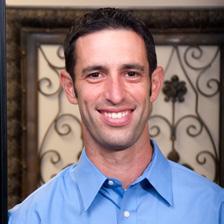
Head of Workforce Solutions at Siemens Healthineers North America
President of Holt, Michigan-based Block Imaging


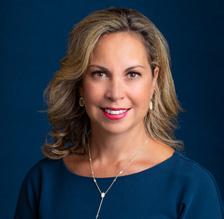
Vice President of Education and Workforce Solutions at Siemens Healthineers North America of Malvern, Pennsylvania
Administrator at Advanced Imaging of Orlando, Florida


As an imaging leader, you have the unique opportunity to inspire and motivate your team members in new and meaningful ways. One such way to do this is by allowing and encouraging your team members to volunteer their time and skills to help those in need.
There are numerous benefits to allowing volunteering for your team members. Firstly, volunteering has been shown to increase job satisfaction and employee engagement. When employees feel like they are positively impacting the world, they feel a greater sense of purpose and fulfillment in their work. This leads to higher motivation and increased productivity, ultimately benefiting the organization.
In addition, volunteering can also provide your team members with new experiences and skills. By working on projects outside of their normal job responsibilities, they can gain new perspectives, develop new competencies and improve their overall job performance.
Organizations can incorporate volunteerism into their culture and not only encourage volunteering but by offering paid time for volunteering. Paid time for volunteering means employees are given paid time off from work to participate in volunteer activities. Offering paid time for volunteering can be a great way to show your team members that you value their contributions to the community and are committed to making a positive impact. By allowing employees to use paid time to volunteer, you are also helping to make volunteering more accessible, as it can be difficult for some employees to find
the time to volunteer outside of work hours. Here are some examples of volunteer opportunities you can encourage your team members to participate in:
Employees can volunteer at local schools, food banks, homeless shelters or other community organizations to help make a difference in the lives of those in need.
Employees with a background in health care, such as radiologic technologists, can volunteer at local hospitals, clinics or nursing homes to provide care and support to those in need.
Employees passionate about the environment can volunteer at local parks, wildlife reserves or environmental organizations to help protect and preserve the planet.
Employees with expertise in a particular field can volunteer in organizations that mentor young people, students or aspiring professionals to help them achieve their goals and reach their full potential.
Employees can organize or participate in fundraising events, such as charity walks or auctions, to raise money for a cause they care about.
Employees can volunteer with organizations that respond to natural disasters, such as hurricanes, earthquakes and wildfires, to
help those affected by these events.

These are just a few examples of how employees can volunteer and make a difference in their communities. The key is finding a cause that aligns with their values and passions and getting involved in a meaningful and impactful way.

Moreover, volunteering can also help build a strong team spirit and foster better working relationships among team members. By working together on a common cause, team members can get to know each other personally and learn to appreciate each other’s skills and strengths. This can lead to a more positive work environment and improved communication and collaboration among team members.
Allowing and encouraging your team members to volunteer is beneficial for your employees and your company and supports corporate social responsibility (CSR). CSR refers to the idea that companies have a responsibility to not only operate profitably but also to consider the impact of their actions on society and the environment. In addition to
improving your company’s reputation and establishing it as a responsible corporate citizen, allowing your team members to volunteer can also help build strong relationships with the local community. By working together on projects that benefit the community, your team members and the community can get to know each other and develop a mutual understanding and respect. This can lead to increased support for your company and improved relationships with stakeholders in the community.
In addition, by providing volunteer opportunities, you can improve job satisfaction and employee engagement, provide your team members with new experiences and skills, build a strong team spirit and establish your company as a responsible corporate citizen. So, why not take the first step and create a volunteer program for your imaging team today? •
At RSTI, we teach application of technical knowledge, not just concepts, using a combination of classroom and lab instruction. By allowing students to get vital hands-on experience while learning the theory behind the application, the skills we teach can be applied to a variety of equipment. All basic theory and lab exercises are based on a multivendor approach consistent with today’s technology. RSTI students complete lab assignments on our install base of over 70 diagnostic imaging systems representing all major equipment manufacturers. More in-depth service capability can be obtained through RSTI’s product-specific classes.


RSTI COURSE OFFERINGS:
• eLearning Training Options (On-line with a Live Instructor)
• X-Ray Certificate Series, Phases 1-4 (approved for veterans training)
• Management, Networking and Digital Information
• Product-Specific (Rad/Fluoro, Portables, C-Arms, Cath Lab, Mammography)
• Modality-Specific (CT, MRI, Nuclear Medicine, Ultrasound)

Iwas reading an article online about research looking at equity in gender pay. It appears that the gender pay gap has remained stable for the last 20 years. Today, women have an earning average of 82% of what a man makes. In 2002, women had an earning average of 80% of what a man made. Can anyone tell me what could be the rationale behind this gap? (As if we don’t have assumptions).
BY VERLON SALLEY DEISince you are reading an imaging magazine, let’s focus on radiologists. What could be the difference between a male radiologist and a female radiologist, as far as work performance? I was never a practice administrator, but I am sure whether male or female you had to attend medical school. Then, after medical school – whether male or female – you had to pursue a residency. Some radiology students specialize in interventional radiology, which in the past five years has become its own discipline. Some radiology residents pursue fellowships to specialize in a particular anatomy (neuro radiology, abdominal radiology, MSK radiology, etc.). In other words, the differences cannot be in education, so it must be with innate differences in the genders.
There could be a lot of variables that could cause a pay gap:
• Merit increases
• Incentive pay
• Overtime
• Medical directorships
• Administrative duties
We are fooling ourselves if we ignore the dominant factor. The dominant factor that would have to be considered is the ability for females to have a baby. Mothers between the ages of 25-44 are less likely to be in the workforce than women of the same age without children at home. Fathers (males) are much more likely to be in the workforce, and are apparently able to make 18% more than a women with the same performance. To make matters more interesting: Black women make only 70% as much as white men; White women 83%; and Hispanic women earned only 65%. Asian women made 93% as much as White men, which was the closest to complete fairness.
This brings me to the point of equity and inclusion. Who decides someone’s pay? Why would it not be based on work performance and years of experience? How does the compensation department at someone’s workplace continue to support this work gap? When are you going to ask the right questions?
A wise man once told me, if you’re not at the table then you are on the menu. Who is at the table asking the above questions to your compensation department? When are you going to inquire about a gender pay review at your place of work? When are you going to realize that equity and inclusion is everyone’s job? Get to work! •
Verlon Salley is the vice president of community health equity at UAB Health System.

I’ve long believed it is impossible to know a situation when you’re in the middle of it. That’s why good leaders surround themselves with smart people. Effective leaders value the insights provided by team members who see things from different perspectives.
Still, most people know egos can be sensitive, hence, they don’t always share the whole truth. In those situations, when someone’s actions or attitudes are causing problems on a team, pointing out those shortcomings can hinder working relationships and the team’s productivity.
Perhaps you’ve heard of 360 feedback reports. For those unfamiliar with these tools, a 360-feedback report collects anonymous information about an employee’s performance and tendencies from a variety of perspectives.
Conducting a 360 starts with developing a purposeful set of questions and then deciding who will be asked to answer those questions. Questions can use Likert scales (e.g., rating someone 1-10 on a given skill or tendency) or respondents can provide a short answer. Sometimes both are used.
The main idea is to gather information
anonymously because that’s the best way of getting honest, candid responses. Who are the best respondents? Usually supervisors, peers and subordinates, although in some cases customers or clients can also be asked to provide input.
As with anything, the saying “garbage in/ garbage out” applies. If questions on a 360 are worded poorly, then respondents are likely to provide input that isn’t all that helpful. It’s also important to find a suitable number of questions. Too few and you don’t get enough useful information; too many and respondents will likely tire of giving their input, thus making their feedback rather inert and therefore useless.
Wisdom is also needed when reviewing a person’s results. It’s easy if everything looks great. The reviewer can tell the person to keep doing what they’re doing because it’s obviously working. But care is needed if responses aren’t exactly glowing. How a person reviews the results of a 360 can make or break an employee’s desire to work on blind spots and deliver for the company.
Reviewers should always look for ways to develop growth opportunities. Simply reporting bad feedback to someone is not only demoralizing, it can lead to

attempts at retribution. More specifically, those receiving negative feedback might attempt to identify who gave the bad marks so they can get back at them. To prevent this, reviewers should emphasize the need for everyone to be proactive, not reactive. Emphasize that even minor changes can lead to significantly improved relationships.
If an employee receives a lot of negative feedback, some specific suggestions for reviewers include:
• Ensure the review is conducted privately and discretely.
• Use the sandwich cookie approach. Let the person know his or her 360 indicates there’s room for improvement, but good things were reported, too. Start by referencing some of the good, and after you review the entire report, end the session with encouragement and hope.
• Create an emotionally safe environment. Be sure the person being reviewed knows you will help him or her get the support needed to make any suggested improvements.
• Ask for feedback. Sometimes a person might make excuses or try to place blame, so acknowledge their perspective as a possibility, but bring it back to exploring why someone might have provided the low marks or made a negative comment.
• Throughout the review, brainstorm with the person possible actions for addressing concerns that were raised by others. Re-emphasize that the purpose of the 360 is to identify what’s working well as well as avenues that might be taken for making improvements.
Feedback showing a need for improvements in technical skills will be industry-specific, but when it comes to general management/leadership issues or interpersonal skills, several suggestions tend to be universal.
Consider the following review of an executive whose review was far less than stellar. Let’s call him Jake.
Jake was described as keeping everything too close to the chest, leaving others out of the planning and organizing process and not bothering to communicate corporate strategy to his team.
People said that when something went wrong, Jake was quick to criticize and find someone to blame. Jake also failed to acknowledge individual contributions and hard work.
When it came to his behavior in meetings, Jake was described as coming across arrogant and aloof, as if the company could not survive without his wisdom.
This was definitely a case where the reviewer needed to be careful. As it happened, senior leadership did consider Jake’s contributions vital to team success, but they knew changes were needed.
As one might imagine, Jake considered the feedback on his 360 devastating. But by following the suggestions listed above, the reviewer worked with Jake to arrive at a list of action steps for making improvements.
• The company’s HR department would work together with Jake to create specific goals.
• Jake agreed to attend specific training sessions focused on active listening, conflict resolution and relationship building.
• The company would help Jake identify a coach who would provide guidance one-on-one for improving his interpersonal skills.
• Jake agreed to conduct a monthly self-assessment, rating himself in specific areas, thus keeping his expected improvements top-of-mind.
• Jake agreed to have another 360-degree feedback in nine months so he and the leadership team could determine whether improvements were being made. As I mentioned at the top of this column, we need different perspectives if we’re to know what’s really going on. Jake had scored himself very well on each question in his 360, meaning he was totally blind about how he was coming across. But with a well-thought-out review and some suggestions from his reviewer, Jake is now on a path of improvement. And the positive ripple-effects of those improvements will be felt by many. •
Daniel Bobinski, who has a doctorate in theology, is a best-selling author and a popular speaker at conferences and retreats. For more than 30 years he’s been working with teams and individuals (1:1 coaching) to help them achieve excellence. He was also teaching Emotional Intelligence since before it was a thing. Reach him by email at DanielBobinski@ protonmail.com or 208-375-7606.































Iwas watching a movie where the mother says to the young daughter, “You lied to me.” The about 5-year-old replies, “You lied to me too.” The mother then says, “Yes I did, but it was for your own good.” This confrontation reminded me that a long time ago, I analyzed the process of lying for the then “Manny’s Moans” I wrote for MD Publishing. It was titled “How to Lie Well.”
I began by stating that there is a core of truth in every good lie. I said that I don’t ever lie, which is a “White Lie.” We use that term to indicate that the lie has no malicious intent, and it does no harm. In fact, it may actually keep from hurting someone’s feeling or may actually increase their feeling of self-worth. The question: “Do these pants make my derriere look big?” comes to mind. (Ruth advised to say derriere instead of ****.) What can you possibly say in response? A truthful but dangerous reply “The problem is not the pants.” is ill advised.

My question is: “Why would you put someone, especially a significant other or a friend, in this predicament where there is no good response?” The “fat pants” question begs for a white lie. Even if the truth is that the pants don’t enlarge the enclosed derriere, the response will always be suspicions, anyway. However, I digress as I normally do.
Research indicates that we all lie a couple of times a day. Who do we lie to and why? Are there instances where a lie is better than truth? Are some lies justifiable? We lie to strangers, coworkers, friends, loved ones, ourselves and anyone who sits still long enough. People lie for many reasons: deception, selfgain, guilt, shame, aggrandizement, self-protection, protection of others, rejection avoidance, self-deception, intentional damage, habit and probably many other reasons. Some lies cause more harm than others. We must look at the intent of the lie to determine if we can accept it, once it is discovered of course.
There exist some semi-reliable means of detecting a lie,
however mostly we cannot tell when others are lying, except for those whose lie indicator is lip motion. Mostly we can only discern that someone is exhibiting signs of discomfort such as face touching, fidgeting, over-detailing, etc. The degree of damage from a lie should be determined by the recipient as well as the degree of absolution given as a result.
It takes a great deal of brain energy and a relatively great amount of time to tell a lie. First, we must know and recognize the truth. Then we must determine that, at this particular moment, we must not tell that truth and that silence is not an option. We then must construct a plausible lie, give voice to it and control the attendant body language so we don’t give ourselves away. We must also be prepared to answer any questions regarding that lie. We also have to commit the lie and the entire incident to memory so we can defend that lie in the future. Yikes! That is a lot of stuff just to deceive someone else.
So, what is the core of truth in the lie? It is the truth itself, that’s the core. To be plausible, the lie must alter, manipulate, twist, bend, and many other verbs, the lie. To convince someone that the lie is the truth it must have a basis in fact.
Some people are not good at lying. They can’t leave the core of the truth in place and yet embellish it to a believable lie. These people have trouble believing the fact that others can be great at lying. Devastating results may follow such as loss of relationships, money or property.
I, myself, try to stay within the boundaries of the truth. It is much easier to remember the truth than it is to remember a lie. My second course of action is to “Remain silent and be thought a fool than to speak and remove all doubt.” to quote Benjamin Franklin. The third option is to omit the items that, although truth, will cause problems either to me or to others: The White Lie. I find that I do not encounter too many instances where I am stretched beyond these options. •
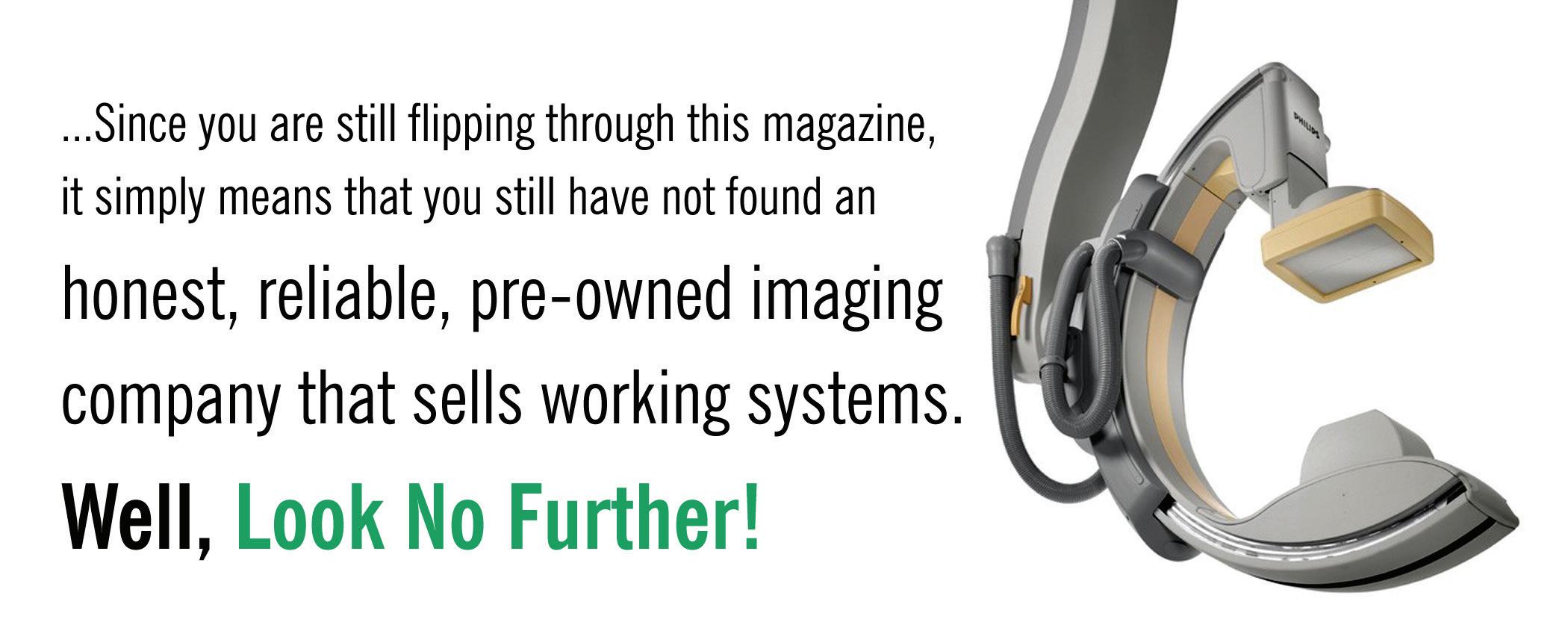






FEBRUARY 18-20, 2024 IRVINE, CALIFORNIA
Down
1 Placenta connection: _____ cord
2 Modality ____: small groups of academic and community radiologists, technologists and physicists providing clinical expertise in each modality
3 Body’s midsection
4 Management style that encourages employees to approach their leaders with questions, concerns or ideas, 2 words
5 Turndowns
6 Term used to describe how a drug or other substance produces an effect on the body
7 Google integration using AI to read retinal OCT scans and diagnose 50 different ophthalmic conditions accurately, 2 words
8 Radio _____ (radioactive materials used in some medical scans)
13 Computer key next to Q
15 Cardiac _____: condition that occurs when the fluid sac around the heart fills with blood or other fluid putting pressure on the heart
21 Managed
22 Ultrasound ____ Flow Imaging
25 She coined “radioactivity”
27 Physics and biology category, abbr.
28 It records a patient’s care
30 Makers of “ProFound AI”- a solution for digital breast tomosynthesis, an aid to better cancer detection
32 A couple
33 Kind of scan





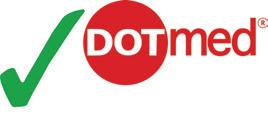
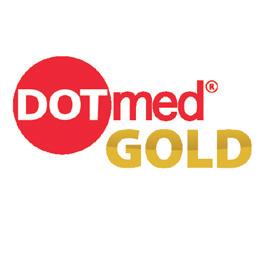










626 Holdings
p. 5
Health Tech Talent Management, INC.

p. 48
HTM Jobs
p. 32
Advanced Health Education Center

p. 21 AHRA
p. 51
AllParts Medical



p. 18
Banner Imaging
p. 23
Brandywine Imaging, INC.
p. 48
Chronos Imaging LLC
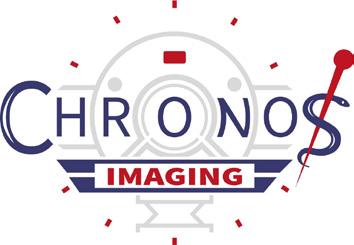
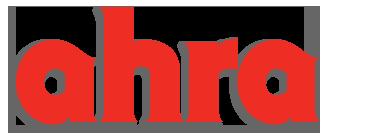
p. 39
CM Parts Plus

p. 27 Engineering Services
p. 3
PM Imaging Management


p. 27
Radon Medical LLC
p. 46
Imaging Academy
p. 2
International X Ray Brokers

p. 27
Ray-Pac® Ray-Pac
p. 52
RIchardson Healthcare
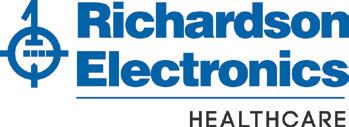
p. 13
Kei Medical Imaging Services

p. 49
KMG - King’s Medical Group

p. 44
Maull Biomedical Training, LLC


p. 44
Metropolis International LLC

p. 46
MW Imaging Corp. p. 48
RSTI
p. 40
Technical Prospects
p. 4
SOLUTIONS
TriImaging Solutions
p. 9
W7 Global, LLC.
p. 49 Webinar Wednesday p. 33

AHRA's origin story began 50 years ago. Join your imaging peers this summer at the AHRA 2023 Annual Meeting and Exposition-- the pinnacle of our year-long celebration of the great strides made by AHRA and the medical imaging community over these past five decades.
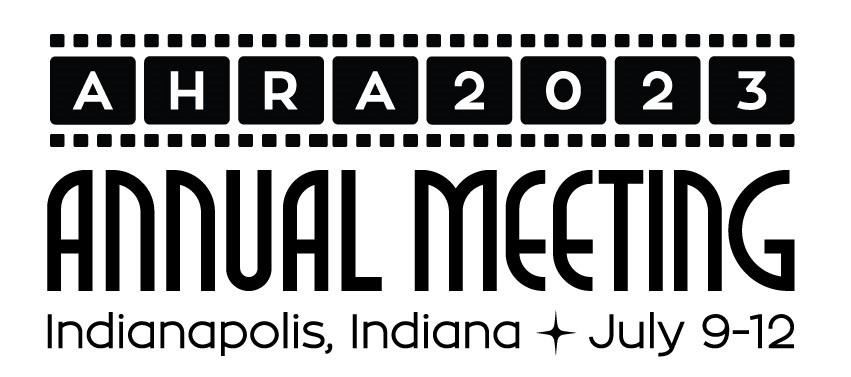


The stage is set for a special look at AHRA's history, as well as today's challenges and successes, and a glimpse to what the future of imaging may hold.
Do not miss this memorable imaging event. After all, you're helping shape the next 50 years of healthcare!



